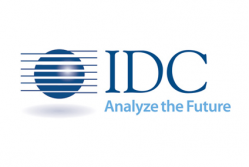The Worldwide Semiannual Augmented and Virtual Reality Spending Guide update, recently released by International Data Corporation (IDC), forecasts Western European revenues for the augmented reality and virtual reality (AR/VR) market to reach $2.5 billion in 2017, showing a 131% increase over the $1.1 billion spent in 2016. AR/VR spending will further accelerate in the coming years, achieving a compound annual growth rate (2015-2020 CAGR) of 210% and totaling $25.7 billion in 2020.
“These kinds of devices have been around for a while; but now we are seeing the right combination of content, components, investment and awareness in place, for the quantity and quality of the experiences to become a driver for adoption,” said Francisco Almeida, senior research analyst, Mobile devices and AR/VR. “On the virtual reality side, companies understood that there is much more potential than just gaming, and new content/services around storytelling and interaction are beginning to surface. AR will continue to have an enterprise focus for the time being. Per our Mobility Business Survey (Jan 2017), 58% of the surveyed European companies are running trials/pilot programs, with 13% of those claiming full deployment.”
The Consumer market will be the largest AR/VR segment in the coming years, accounting for more than 50% of spending in Western Europe, (including hardware, software, and services) until 2018. This is driven in particular by the Consumer leading role in the Virtual Reality market. The Augmented Reality scenario completely changes in terms of industry distribution, with consumer share remaining below 20%. Manufacturing and Retail are expected to drive AR spending in Western Europe in terms of both market share and growth. This will lead Manufacturing and Retail, together with Utilities, to be the three fastest growing industries considering the full AR/VR picture, with all these sectors expected to have a 2015–2020 CAGR of around 220%.
Source: IDC Worldwide Semiannual Augmented and Virtual Reality Spending Guide, February 2017
In terms of industrial use cases, industrial maintenance (manufacturing), logistics and package delivery management (transportation), and product development (manufacturing) will lead 2017 ARVR European spending. Meanwhile, retail showcasing (retail) and anatomy diagnostics (healthcare) will be the fastest growing industrial use cases in the coming four years. On the consumer side, games will lead industry growth, with both AR and VR games expected to experience a CAGR above 220%.
Although hardware (including both viewers and commercial hosts) currently represents more than 80% of the AR/VR spending in Europe, software and services spending will surge, hitting more than 50% of overall AR/VR revenues in 2020.
“The industrial application of AR is evolving and its adoption is expected to rapidly ramp up in particular in those fieldworker-based sectors, such as manufacturing, transportation, and utilities. Meanwhile, VR is still strongly limited to the gaming/amusement consumer sector and providers need to make an effort to further prove business cases and expand industrial coverage and usage,” said Andrea Siviero, Research Manager, European Customer Insights and Analysis. “ARVR does not represent an opportunity for just hardware providers; services and software players could certainly ride the wave and they will have a key role in bringing use cases to life, while fully integrating them with existing company infrastructure and assets.”
The Worldwide Semiannual Augmented and Virtual Reality Spending Guide examines the AR/VR opportunity and provides insights into this rapidly growing market and how the market will develop over the next five years. Revenue data is available for eight regions, 12 industries, 18 use cases, and 10 technology categories. Unlike any other research in the industry, the comprehensive spending guide was created to help IT decision makers to clearly understand the industry-specific scope and direction of AR/VR expenditure today and in the future.

